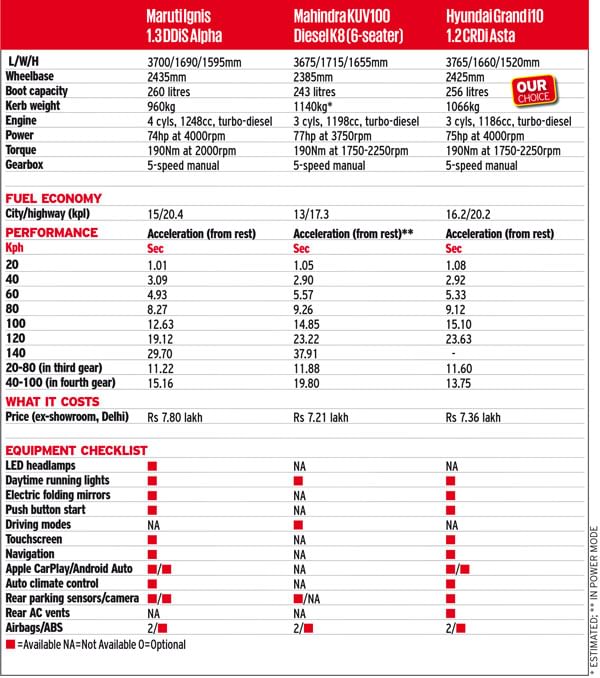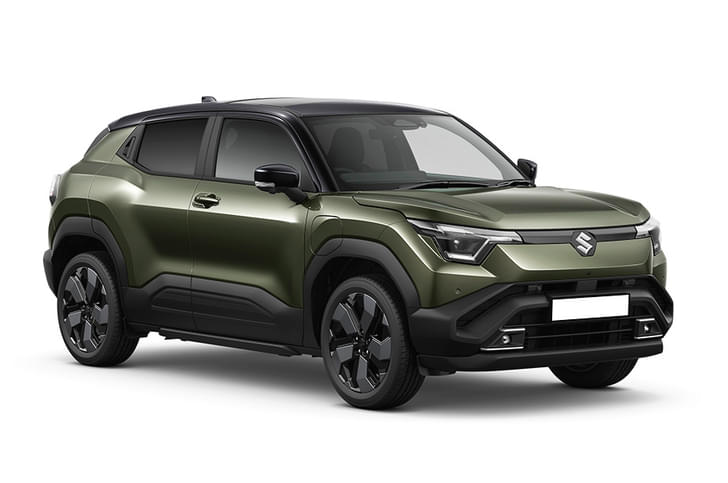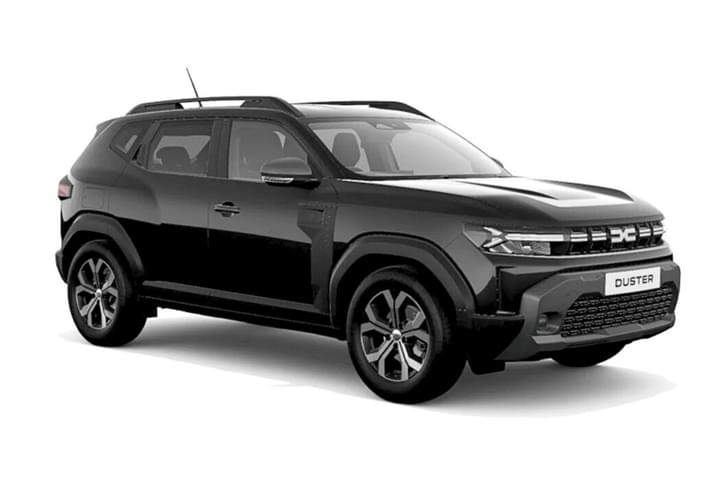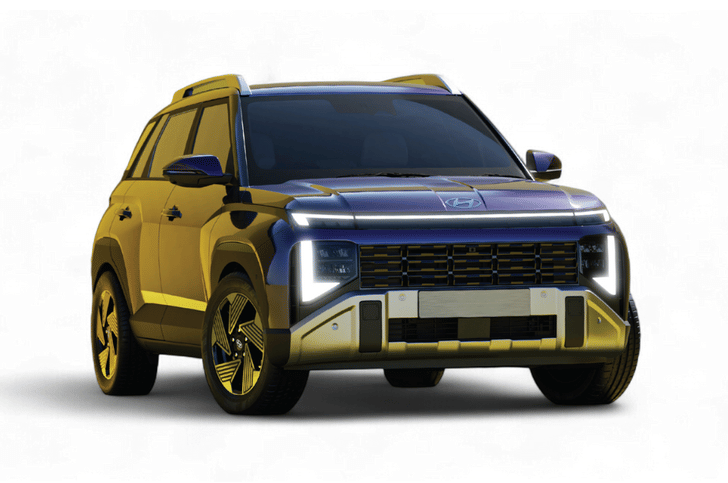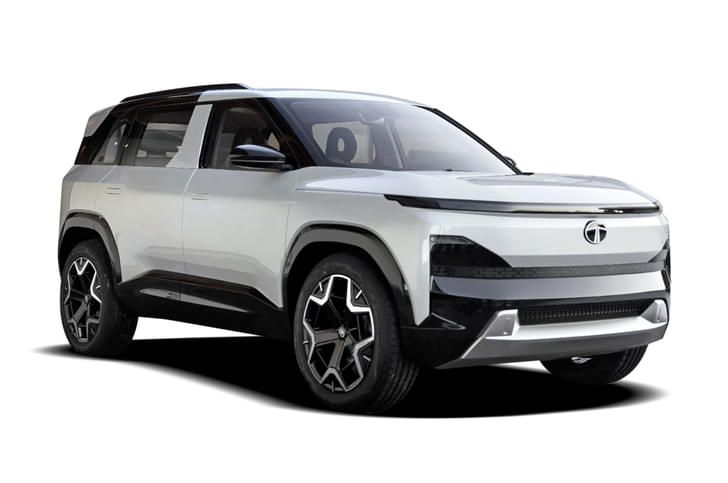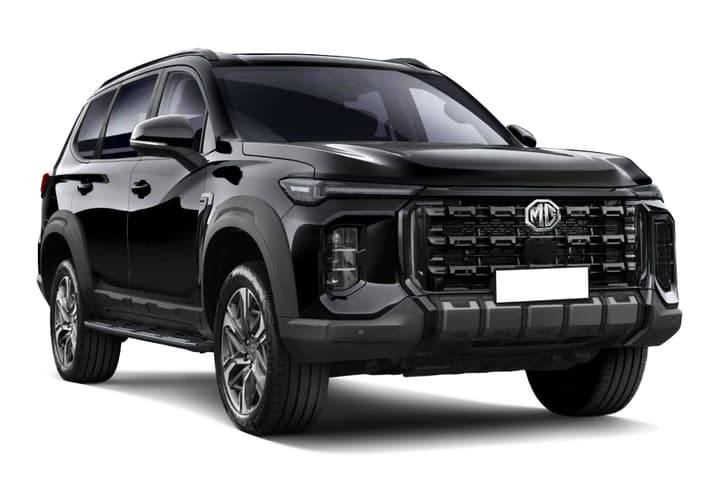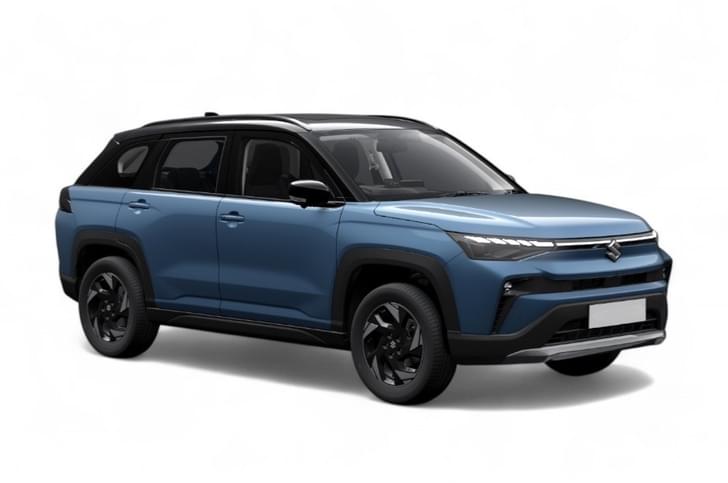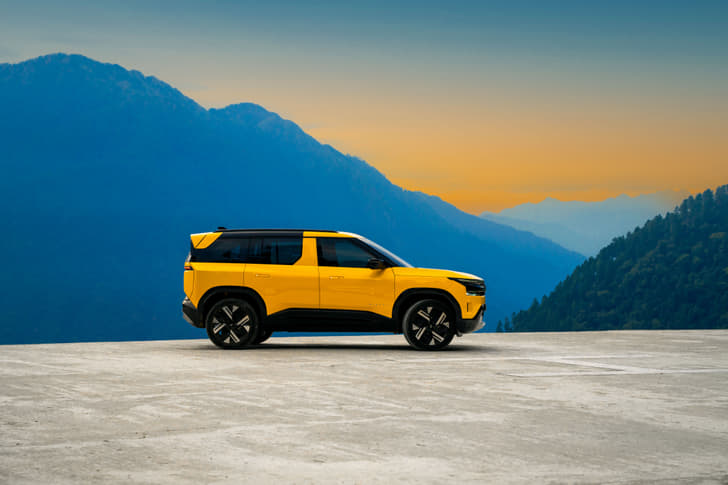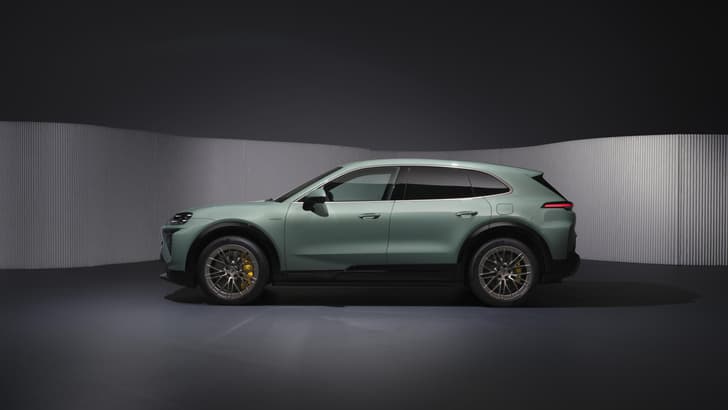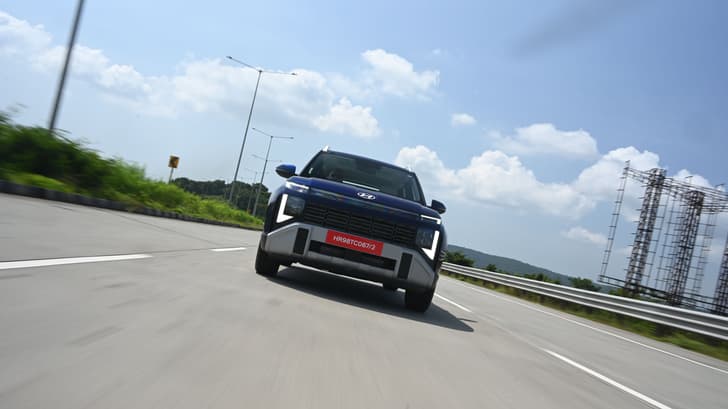The last thing Maruti needed was another hatchback. But, lo and behold, it’s brought out the Ignis. It’s a car that Maruti believes will strike a chord with young buyers looking for something out of the ordinary. To be successful the Ignis primarily has to do just that. It has to look, feel and drive distinct to the horde of other Marutis on our roads and also edge past the competition – that comes from the likes of the Mahindra KUV100 and Hyundai Grand i10 – in the areas that matter. Mahindra may market the KUV as an SUV but at its core, this is a hatchback, with a monocoque body, front-wheel drive and all. Like the Ignis, the KUV also relies heavily on its design to distinguish it from the other hatchbacks on sale. The Grand i10 is the oldest car here but it’s fresh from an update and is all the better for it. That the Grand i10 is a constant entry in the list of India’s bestselling cars also makes it the model to beat.
For this comparison, we’ve considered diesel versions to include the updated 1.2-litre motor in the Grand i10. As always, all parameters will get due attention and weightage while deciding the final standings.
The shape of things
If you like your car to be conventional in shape and design, the Ignis and KUV100 might not catch your fancy. Both sport pseudo-crossover designs and invite the same love-it-or-hate-it reactions as the Hyundai Santro, the original ‘tall boy’, once did. The Ignis’ look is a clear break from the Maruti (or Suzuki) template and in a way, that’s what also makes it special. This isn’t your everyday family Maruti but one that makes a statement with the way it looks. Frontal styling is smart, and what’s particularly nice is how this top-spec Alpha trim car’s LED DRLs outline the headlights on the large grille. Adding to the cool quotient are this Alpha trim Ignis’ first-in-class LED headlights. They provide excellent illumination at night but also promise to be expensive bits to replace, if damaged. Wide wheel arches, blacked-out A-pillars and black alloy wheels give the Ignis some personality but it’s aft the B-pillar that opinions on the small Maruti’s look vary most. Some of us find the chunky C-pillar (replete with those ‘Adidas’ stripes) to add muscle to the design, while others find it out of place on a car this small. Rear styling is more polarising still. The rake of the windscreen, upright tailgate, shape of the tail-lights and large slab of plastic cladding on the bumper make the Ignis’ behind look, well, different. Good different or bad different is a matter of personal opinion. However, the Ignis’ 175/65 R15 tyres appear narrow, especially when viewed from the tail.

You’ll have to use a bit of imagination with respect to the KUV100 pictured here. Mahindra categorically refused to provide us a car for this comparison (they possibly knew what the verdict of this test would be before we did!), so we had to make do with a base-spec version we managed to source from the market. In essence, top-spec KUV100’s get more chrome detailing, body-coloured mirrors and door handles, some cladding on the doors and wheel arches and, of course, alloy wheels. Of late, Mahindra has upsized the alloy wheel size on the top K8 KUV from 14 to 15 inches and has also introduced dual-tone (basically black roof and pillars) paint schemes. We’ve seen the car in question in the flesh and the larger wheels have helped the KUV100’s looks to some extent. Still, styling is overdone with undue cuts and creases, and there’s a visible lack of design harmony between the SUV-like front end and hatchback-like tail. It is eye-catching, just not necessarily for the right reasons. The KUV is the shortest car here in length but is the tallest and widest which only serves to emphasise its oddball proportions.In the company of the Ignis and KUV100, the Grand i10’s design almost comes across as too safe. It’s got the most conventional silhouette. But is that a bad thing? Not really. There’s a nice balance to the design and the restrained lines work well. Part of the recent facelift is a reshaped grille and L-shaped fog lamp surrounds on the front bumper that is not only home to the new LED DRLs but, as per Hyundai’s claims, also help improve aerodynamics. The smart alloy wheel design is new too, and completing the makeover is the revised rear bumper. While the latter’s black cladding and large round reflectors do look slightly out of sync with the rest of the car’s styling, they won’t be deal-breakers like certain visual elements on the Ignis and KUV.
Inside lines
Open these cars’ doors and you’ll find a) the Ignis is unique on the inside too b) the KUV’s cabin is unexpectedly restrained in styling and c) there’s more of the neat and clean look in the Grand i10. The Ignis’ cabin is chic and, again, looks unlike any other Maruti’s. The upright dash with its high-set ‘floating’ touchscreen, the use of toggle switches for the distinctive climate control pod and the body-coloured panels on the base of the centre console and door handles, all come together really well. But even if it may not look it, this still feels like a Maruti cabin. Quality levels are good but not great, and existing Maruti owners are sure to notice familiar bits like the power window switches that have their roots in the first-gen Swift. Just wish the Ignis also borrowed the Baleno’s colour multi-info display in the instrument’s binnacle; the old-school dot-matrix display looks out of place in the otherwise modern-looking cabin. The front seats could have been a tad firmer too, but they are well contoured and hold occupants well.
While on the topic of front seats, there’s a lot to talk about the KUV. You see, Mahindra sells the KUV in five- and six-seat versions – the former features two individual chairs up front, while the latter uses a front bench seat arrangement. Sure, it’s possible to sit three abreast on the bench seat, but middle passengers get limited legroom and there’s the bigger concern about safety; would you want to be seated so close to the gear lever? Were it up to us, we’d opt for the conventional five-seat layout whose shapelier front seats offer superior comfort too. Whatever be the seating configuration, you sit high up and get a good view out, though some might find the ‘bowed’ dashboard that rises at the centre hampers visibility to some extent. The dash is smart in design and thankfully free from the overdone stylistic flourishes of the exteriors. What is unique is the positioning of the gear lever and handbrake on the centre console itself; done so to make space for the front middle seat. While the gear lever falls easily to hand and is really nice to use, the pull-type handbrake is cumbersome to operate and simply feels outdated. Also, not doing the KUV any favours is the small monochrome infotainment display. Quality levels are a mixed bag too. The textured finish on the dash top feels rich but the plastics lower down aren’t quite as nice.
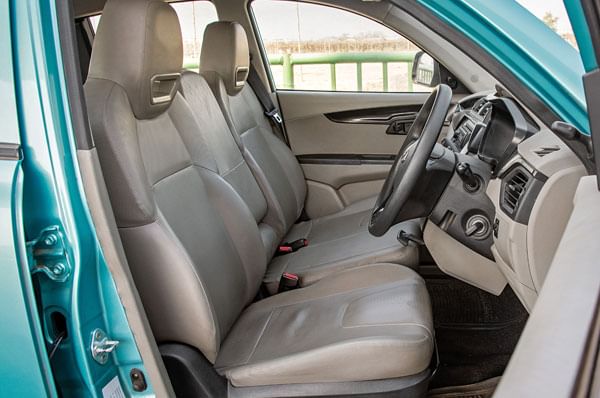
If there’s one area where the Grand i10 is clearly superior to the other two, it has to be in cabin quality. The Hyundai is easily the best put together and quality levels are at par with cars from a class or two above; feel-good bits, like the leather-wrapped steering, just enhance the ambience. As before, the Grand i10’s dash is smart and well laid-out, while the new 7.0-inch touchscreen and auto climate control introduced with this facelift have done their bit to bring the cabin up to speed. However, the front seats aren’t as generous in size as the other cars’ and the fixed front headrests should have been more accommodating for taller occupants.
Shifting focus to the rear section of the cabins, all three cars offer surprisingly good legroom for their small footprints, and each gives rear occupants plenty of headroom too. Still, it’s only the KUV that’s really wide enough to seat three adults in reasonable comfort. Further aiding middle passenger comfort is the Mahindra’s flat (but comfortable) rear seat and flat floor. The KUV is also the only car here with a rear centre armrest and the safety of adjustable headrests for each of the three rear seats. Unfortunately, while you do sit high up, outside visibility is hampered by the plastic panel beside the rear windows that’s there to hide the mechanism for the Chevy Beat-like high-set external door release.
Tall passengers might have their own visibility-related issues from the Ignis’ rear seat as well. Those taller than 6ft will find that the top of the rear windows is below eye level, effectively forcing them to sit slightly crouched down to get a good view out. And that the rear seat backrest being quite upright doesn’t help matters.
Rear passengers sit relatively low in the Grand i10 but the large windows offer good visibility. Other things to like include the nicely reclined backrest, the inclusion of a dedicated rear air con vent and the more than sufficient legroom which is second only to the KUV’s. Sadly, though, the seat base isn’t as supportive as it should be.
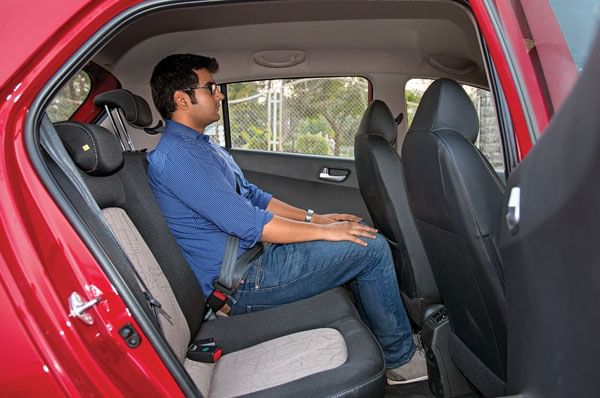
All cars offer plenty of in-cabin storage but it’s the KUV that goes one up on the others with a unique concealed recess that’s built into the rear floor. The six-seat KUV also features a hidden tray under the co-passenger’s seat. Amongst the KUVs, it’s the five-seater that offers more space for smaller items thanks to its large central shelf between the front seats. In terms of space for larger luggage, it’s the Ignis and Grand i10 that are closely matched for space and convenience. The KUV’s luggage bay is sizeable too but the loading lip is high and the sill is narrow. Folding rear seatbacks help increase luggage space in all three cars but only the Ignis’ seats split 60:40.
Feature proof
Before getting into the comfort features these cars come with, it’s essential to talk safety first. Maruti is commendably the most generous in this department with dual airbags, anti-lock brakes and ISOFIX child seat mounts offered as standard across the range. In comparison, all versions of the KUV100 get ABS, while only the top-spec K8 gets front airbags and ISOFIX seat mounts as standard. At least, Mahindra offers dual airbags as part of a Rs 22,000 ‘+’ package on lower trims. Hyundai doesn’t give similar flexibility to buyers. Base Grand i10s get a driver-side airbag and mid-spec Sportz trim upwards there’s one for the front passenger too, but what’s really disappointing is that ABS is reserved only for the top-spec Asta version of the car.
Of the other features of note, alloy wheels, daytime running lights, rear wiper and defogger, reverse sensors, tilt adjust for the steering and steering-mounted audio controls are common to the top-spec versions of all three cars. The KUV stands out by offering auto start-stop (aka Micro Hybrid tech) and selectable drive modes, but it is also the only one here without auto climate control, a reverse camera and a touchscreen infotainment system. The Ignis and Grand i10’s touchscreen units handily come bundled with sat-nav, Android Auto and Apple CarPlay, but where the Maruti screen is better in terms of readability, the Hyundai’s unit is more responsive to touch inputs. Also, as mentioned, the Grand i10 is the only car here with a rear air con vent.
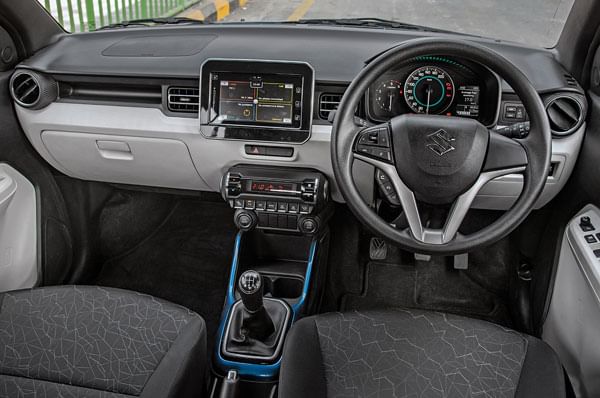
Pot luck
See the spec sheets and you’ll know this is a competition of small cars with small diesel engines. Like all Marutis from the past decade, the Ignis too uses a Fiat-sourced, four-cylinder, 1.3 diesel, albeit in fixed geometry turbo form that makes 74hp and 190Nm. Mahindra’s indigenously developed mFalcon D75 diesel is the source of power in the KUV100. This three-cylinder, 1.2-litre engine makes 77hp and 190Nm. Sitting between the other two engines on the power scale is the Grand i10 with its 75hp and 190Nm. Interestingly, the Grand i10’s power and torque figures are now up by 4hp and 30Nm, courtesy a revised (read enlarged) engine under the bonnet. Engine displacement has been increased from 1,120cc to 1,186cc but the real performance gains come from a remapped Engine Control Unit (ECU) whilst a new alternator management system claims an improvement in fuel efficiency. Also note, the Ignis is a good 100kg-plus lighter than the Grand i10 and about 160kg lighter than the KUV100. These are the specs on paper, but what are they like to drive?
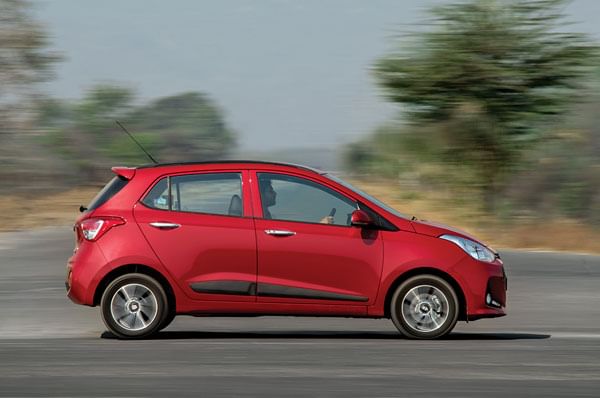
If you’ve driven one diesel Maruti, you’ve driven them all. The Ignis carries forward the key traits of the engine it hosts. That is to say, there’s a distinct clatter at idle, noise levels are high through much of the rev range (it’s the loudest at max revs) and power only comes in earnest at about 2,000rpm when the turbo wakes up. There is a healthy dose of power between 2,000-4,000rpm but the engine doesn’t provide the same top-end zing on the Ignis as it does on a Swift and Swift Dzire, and that’s a bit of a downer. In the lower half of the rev range, you’ll also note the marked difference in performance on and off turbo boost. The numbers reflect the same. For instance, the Ignis is the quickest car from 20-80kph in third gear but, without sufficient assistance from the turbo, it is also the slowest from 30-50kph in third.
Diametrically opposite in character is the KUV100’s engine. There’s minimal turbo lag and the engine pulls well from about 1,500rpm but there’s also no step up in power at any point. This is not an engine that rewards you for revving it hard, rather it’s one that works best on small throttle inputs and early upshifts. In that sense, the KUV100 works well in urban settings. Adding to the experience is the joystick-like gear lever that offers slick and precise shifts. If only the clutch was a bit more progressive. Top-spec KUV diesels also get an efficiency-enhancing ‘Eco’ driving mode. Performance takes a big hit but in rush-hour traffic where speeds are low, the Eco mode provides a clever way of saving fuel. Whatever mode you may be in, though, there’s no escaping the thrummy three-cylinder engine’s relatively high noise levels. The KUV has the loudest idle (albeit it’s the quietest at max revs at a standstill) and is also the noisiest at 50kph in fourth gear and 80kph in fifth gear.
It’s the Grand i10’s engine that is the quietest in most scenarios but overall refinement has some low points too. The three-cylinder engine doesn’t sound great, and, at idle, you can feel vibrations at the steering, pedals and gear lever. Things do smoothen out rather well as you get moving and it’s on the move you’ll experience how much of an improvement the new engine is over the older one, which is largely thanks to the remapping of the ECU. As before, there’s no turbo lag to speak of and power delivery is linear as ever and real-world performance is vastly better than the old car’s. Just have a look at the improvement in in-gear times – 20-80kph in third gear takes 11.60sec compared to the earlier car’s time of 14.24sec and 40-100kph in fourth gear is also down to 13.75sec (the quickest here) from the leisurely 17.23sec it took the older car. The powerband is wider than before too, but the best approach is to upshift early and make the most of the engine’s easy-going nature. The light clutch and smooth gearbox add greatly to the ease of use.
Hyundai claims the revised Grand i10 diesel is more fuel efficient too, and it is. The Grand i10 delivered 16.2kpl in town and 20.2kpl on the highway, up 0.8kpl and 0.6kpl on the old car, respectively. The Ignis’ 20.4kpl figure makes it marginally more efficient on the highway though in-town economy is a lower 15kpl – perhaps reflecting the need to work the gears more. In the same city and highway cycles, the relatively heavy KUV managed 13kpl and 17.3kpl.
Rock and roll
These cars stick to the proven front MacPherson struts and a rear torsion bar formula for their suspensions. The Ignis feels relatively stiffly sprung though and you can feel (and hear) the car go over surface imperfections at city speeds. However, thanks to the firm setup, the Ignis also feels fairly sure-footed at highway speeds and doesn’t move around as much as its rivals. Just don’t expect the Ignis to drive like a Swift. Its light steering feels inert with some slack around the straight-ahead position and, frankly, it doesn’t feel as playful from behind the wheel as its looks and youthful persona would suggest.
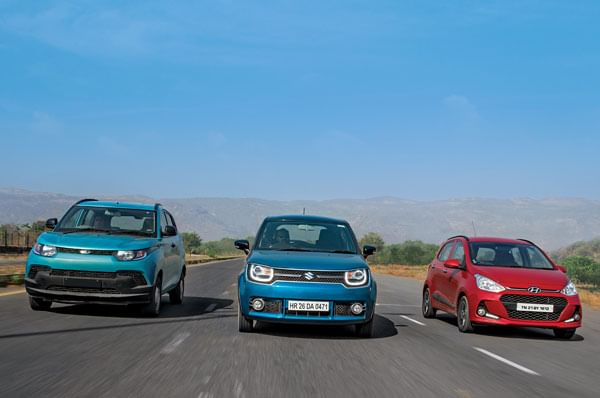
That said, you’d be best advised not to test the dynamic limits of the KUV100. There’s a lot of roll in the corners and the suspension feels noticeably soft at highway speeds. There’s plenty of up and down motion and you get moved around quite a bit more in the cabin. But it’s at lower city speeds that the KUV100 feels quite nice. Bump absorption is good and it rounds off the edges quite well. Note, our judgement is based on the low-spec version and its 14-inch wheels. The new top-spec KUV with larger 15-inchers should perform better on larger potholes. The KUV’s steering isn’t as light as the other two cars, but on the positive side, it adds some confidence when you do up the pace.
The Grand i10’s steering was always light and easy to twirl but Hyundai has made changes that make it better on the highway too. There’s a greater feeling of control than before, and tweaks to the suspension have also helped reduce the Grand i10’s high speed bobbing and pitching to a great extent. However, low-speed ride quality is easily the best here. The Grand i10’s suspension soaks up the bumps really well and does so without protest or noise. The Hyundai really feels more grown-up than the other two on this front.
The final tally
If you have a large family and are comfortable with the idea of the front bench seat, the six-seat KUV100 should interest you. We aren’t fans of the way it looks, but there’s no denying the Mahindra is a different take on the family hatchback. It also makes for a reasonably nice city car with decent performance in town and pleasant-enough ride quality. However, the KUV isn’t as refined as it ought to be and also misses out on many features. The KUV100 does have the lowest asking price of Rs 7.21 lakh (ex-showroom, Delhi) but its lower fuel economy also points to higher running costs.
The Ignis, on the other hand, scores well on fuel economy like any Maruti should but is also uncharacteristically expensive. Sure, the top Ignis gets a lot of goodies and you get a superior buying experience at Maruti’s upscale Nexa dealerships which sell the car, but Rs 7.8 lakh is just too much money for it. What is also is a bit of a disappointment is that, despite its uniqueexteriors and interiors, the Ignis doesn’t feel a world apart from the other Marutis on sale. A part of the blame goes to the loud and clattery 1.3 diesel that simply feels at odds with the otherwise modern Ignis.
And this leaves us with the Grand i10 that comes across as the most wholesome and sensible buy of this trio. With the recent update, Hyundai has built upon a good car and made it better still. Performance is greatly improved, ride quality is nicer and there are more features on offer as well. The Grand i10 isn’t perfect, but for the justifiable Rs 7.36 lakh Hyundai wants for the top-spec diesel, you will readily overlook the few weaknesses for what the rest of the package gets you. Over 10,000 buyers have been putting their money down on the Grand i10 each month. And By the look of things, that number could go up.
